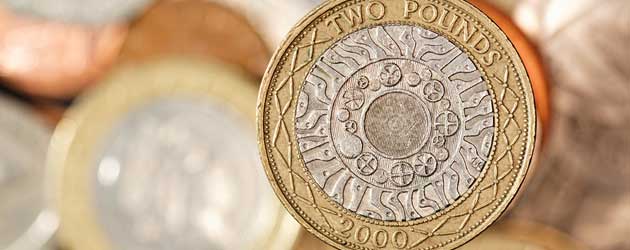Pound Sterling (GBP)
The latest developments in the Scottish bid for independence dominated trader focus on Monday as investors attempted to price-in the possible ramifications of a divided Britain. The hangover hasn’t abated on Tuesday as the referendum still overshadows domestic data publications, but the initial shock of the lead gained by the nationalists has subsided a little. This is evident when you look at the Sterling to the Japanese Yen exchange rate on Tuesday, which has strengthened considerably on the back of poor Japanese economic data.
It is thought that the Pound could potentially depreciate by around 5% if Scotland vote to leave the 307-year-old currency union, and London-based Parliamentary figures have reacted accordingly by offering Scotland more domestic power if they remain unionised.
Tuesday’s UK Manufacturing and Industrial Production data has printed positively. This could indicate that the attempted shift from a domestic-based economy to an export-based economy is starting to come to fruition. However the umbrella of unease has halted Sterling progress as traders avoid the risks posed by an independent Scotland.
It is likely that the Pound will either continue to depreciate further or fluctuate around current levels until the conclusion of the Scottish bid for Independence.
Euro (EUR)
Although Scottish Independence has been dominating investor focus and driving movement in the Pound, the Euro has also suffered after the European Central Bank opted to cut rates and outline additional stimulus measures. The primary objective of loosening monetary policy was to soften the Euro exchange rate in order to boost inflation in the region, but this objective seems to be failing in relation to Sterling at the very least; as the recent rise in votes for Scottish independence has led to a massive Sterling depreciation across the board. The Pound to Euro exchange rate is now around two cents lower than it was in the aftermath of Draghi’s stimulus announcement.
US Dollar (USD)
Sterling declined to a fresh 10-month low versus the US Dollar on Monday as Scottish independence anxieties weighed heavily on demand for the Pound. ‘Cable’ (GBP/USD) is around 10 cents lower than it was in mid-July and it looks like the Pound will struggle to recover from this latest negative shift in sentiment.
As pressure mounts on the Federal Reserve to tighten monetary policy the US Dollar has experienced large gains against the majority of its competitors.
Canadian Dollar (CAD)
The Pound to Canadian Dollar exchange rate hit a fresh 8-month low on Monday as traders reacted to the 51% lead held by those in favour of an independent Scotland. However the Pound has gained a little on Tuesday as the bullish US Dollar invites greater investment and takes focus away from the ‘Loonie’ (CAD).
The ‘Loonie’ has also lost ground after the price of oil has slipped significantly since China’s lacklustre import figure.
Australian Dollar (AUD)
Monday’s Chinese imports data was particularly detrimental to the Australian Dollar. Year-on-year imports showed a declination of -2.4% in August which had the effect of driving down the global iron ore price. Sentiment towards the ‘Aussie’ (AUD) turned negative almost immediately as the Australian economy will struggle from the cut-price commodity.
Tuesday has seen little change for the ‘Aussie’ as investors price in the potential impact of the falling iron ore price. A mixed-bag of Australian economic publications hasn’t helped curtail the downtrend.
New Zealand Dollar (NZD)
Sterling has made slight gains against the ‘Kiwi’ (NZD) on Tuesday as the bullish US Dollar takes trade from the South Pacific currency. The New Zealand Dollar has also been affected by the falling global oil and iron or prices.
South African Rand (ZAR)
The South African Rand has declined a little against many of its rivals after domestic economic data was less-than-satisfactory. South Africa’s Current Account was expected to decline fractionally from the previous figure of -161 billion to -161.8 billion, but the actual data showed a massive slide to -222.0 billion. However, Business Confidence did produce a positive result having risen to 46.0 from the previous score of 41.0.
UPDATE
The Pound continued trending lower against the Euro and US Dollar on Wednesday as the common currency held its own and rate-hike bets supported the ‘Greenback’.
However, Sterling was moderately stronger against rivals like the Australian Dollar, New Zealand Dollar and Canadian Dollar as yesterday’s better-than-expected UK Industrial Production figures lent the British asset support.
Meanwhile, the Australian Dollar declined in response to a suprisingly steep drop in the Westpac Consumer Confidence survey and the New Zealand Dollar came under pressure ahead of the Reserve Bank of New Zealand’s interest rate decision.
The Rand was also struggling amidst a run of patchy domestic data, US interest rate hike speculation and fluctuating commodity prices.


